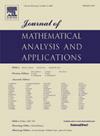Dynamics and optimal control of an SIVR immuno-epidemiological model with standard incidence
IF 1.2
3区 数学
Q1 MATHEMATICS
Journal of Mathematical Analysis and Applications
Pub Date : 2025-03-07
DOI:10.1016/j.jmaa.2025.129449
引用次数: 0
Abstract
Based on the immuno-epidemiological model concept, we propose a susceptible–infected–vaccinated–recovered epidemic model with between-host transmission and within-host infection, where disease transmission between hosts is described by a standard incidence rate and the within-host infection process is governed by a bilinear incidence rate. The basic reproduction number in the between-host model strongly depends on the within-host infection process. If , the disease-free steady state of the between-host epidemic model is locally stable, and if , the endemic steady state of the between-host epidemic model is locally stable. If , the disease-free steady state of the between-host epidemic model is globally stable. Furthermore, to better understand the roles of within-host treatment and between-host control in disease transmission, we formulated and studied an optimal control problem for the immuno-epidemiological model involving treatment and vaccination. Numerical simulations were conducted to demonstrate the effectiveness of the control strategies in various infection processes. The results showed that the duration of within-host treatment must be longer than the duration of vaccination to better control the spread of the disease.
求助全文
约1分钟内获得全文
求助全文
来源期刊
CiteScore
2.50
自引率
7.70%
发文量
790
审稿时长
6 months
期刊介绍:
The Journal of Mathematical Analysis and Applications presents papers that treat mathematical analysis and its numerous applications. The journal emphasizes articles devoted to the mathematical treatment of questions arising in physics, chemistry, biology, and engineering, particularly those that stress analytical aspects and novel problems and their solutions.
Papers are sought which employ one or more of the following areas of classical analysis:
• Analytic number theory
• Functional analysis and operator theory
• Real and harmonic analysis
• Complex analysis
• Numerical analysis
• Applied mathematics
• Partial differential equations
• Dynamical systems
• Control and Optimization
• Probability
• Mathematical biology
• Combinatorics
• Mathematical physics.

 求助内容:
求助内容: 应助结果提醒方式:
应助结果提醒方式:


